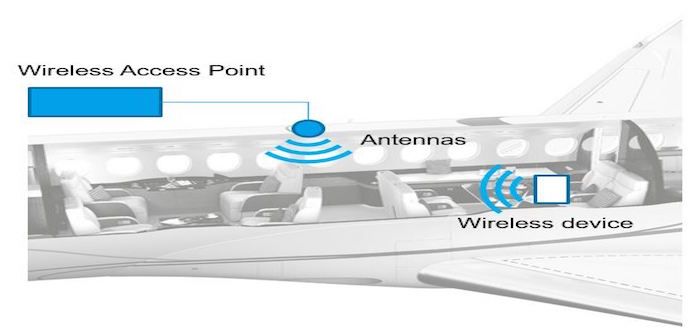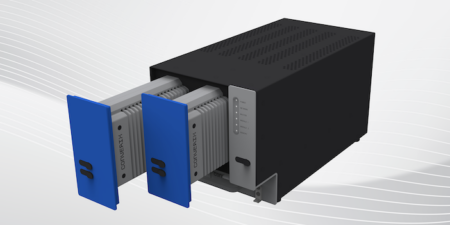Leti, a technology research institute of CEA Tech, has developed a methodology for testing high-speed wireless communications on airplanes which it claims can enable different system deployments in cabins, and for engineers to assesses wireless devices before they are installed.
In a joint research project with Dassault Aviation, Leti has demonstrated a channel-measurement campaign over the wi-fi frequency in several aircraft types, including Dassault’s Falcon business jet. Using a channel sounder and a spatial scanner, Leti has determined a statistic model of the in-cabin radio channel, constructed from the antenna position and the configuration of the aircraft.
A radio-frequency channel emulator and the in-cabin channel model were used to test wi-fi designed for passenger communication and entertainment before installation in the aircraft. In that test, two different wireless access points and different antenna configurations for wi-fi networks deployed in an aircraft cabin were evaluated. Based on a test campaign, mean values of performance parameters, together with the operating margin, were provided according to the device configuration, the type of traffic, and channel conditions.
In addition, Leti says that the technology gives aircraft designers tools to define wireless communication systems that enhance the passenger experience, without aircraft immobilization.
“This research collaboration with Dassault is a critical first step toward validating wireless connectivity systems before they are installed in aircraft,” said Lionel Rudant, Leti’s strategic marketing manager. “Wireless systems have multiple benefits, ranging from more efficient monitoring of aircraft comfort and safety, to reducing the weight of planes.”
Leti’s roadmap also addresses goals for wireless sensor networks, which are part of an industry effort to replace the hundreds of miles of wiring required to connect thousands of sensors and other detectors located throughout an aircraft to monitor safety and comfort factors. The factors range from ice detection, tire pressure and engine sensors, to cabin pressure, smoke detection and temperature monitoring.





